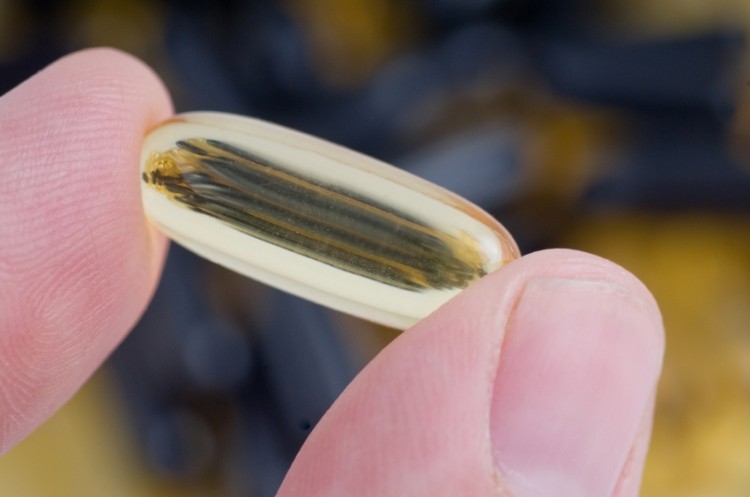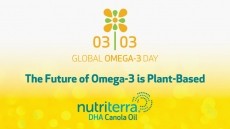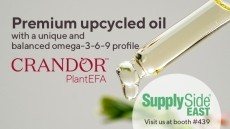GOED EXCHANGE 2016
NMR test method could revolutionize verification of omega-3 oils

At the recent GOED Exchange 2016 meeting held on Tenerife in Canary Islands, managing director Svein Erik Haugmo gave an overview of his company’s technology.
“The industry has had problems with adulterated products,” Haugmo told NutraIngredients-USA. “For example, we have heard of a case of a refinery that bought fish oil that was supposed to be from a source in Peru but it turned out not to be suitable for human consumption.”
How can you be sure where it comes from?
Haugmo’s co-presenter, Oliver Kromer of the German fish oil distributor Imperial Öl Import, laid out some of the groundwork about why a rock-solid testing methodology is needed. Kromer said consumer trust in food products, which extends to omega-3 dietary supplements, has been damaged in recent years by a series of scandals. First there was the melamine scare, in which the chemical usually used in plastics was added in to infant formula and pet food to provide a subsidiary source of nitrogen to fool protein tests. Six infants died in China as a result, and as many as 54,000 were hospitalized. Other scandals followed on melamine’s heels, such as substitution of seafood in the American market, Asian honey finding its way into products sold in the US that were advertised as being from domestic origin and most recently the news that much of Italian ‘extra virgin’ olive oil was tainted with inferior grades or oils form other sources altogether. It’s to the point where consumers start to question, what’s really in this stuff, and can a producer prove that what’s on the label is in the bottle?
The situation is especially pressing in the fish oil game, Kromer said. In a theoretical case study, Kromer showed how the fish oil that ends up in softgels manufactured in the US could come from multiple sources as part of a complicated global supply chain. A Peruvian extractor of crude might purchase greater or lesser amounts of oil from elsewhere to fill in for fluctuations in its own stock, for example. This oil could commonly come from Morocco and the whole chain includes many hands and many opportunities for other oils to find their way into the finished product, overseen in this case by a broker in the Netherlands. Without a test that can differentiate fish oil by geographical source, companies concerned with verifying their supply chain are left with a document trail and a series of relationships based on trust (which of course have to be part of the picture in any case).
“With whole seafood there are a lot of ways to identify it. For processed oils up to now you have been basically stuck with the fatty acid composition,” Kromer said.
NMR technique drills down to geographical source
Haugmo said his company has now developed a method, which is in the final stages of full validation, that can verify oils by species and source. Up to now, this has been done based on the fatty acid profiles. This is a reliable method, especially for verifying that the oil is suitable for human consumption, but the natural variance in stocks means that the values achieved through these tests fall within ranges, rather than hitting numbers on the nose. These ranges overlap, meaning a test result might show that an oil came from one of several sources.
OmegaVeritas, based in Molde, Norway, has developed an NMR technique (Nuclear Magnetic Resonance) that can differentiate isotope ratios in the elemental composition of omega-3 oils. For fish oil, this would look at hydrogen and carbon, and in krill oil and other high-phospholipid sources phosphorus would also form part of the test. The test is sensitive enough to differentiate oils from different regions, as the distribution of isotopes is not uniform around the globe. Haugmo showed a sample test in which the technology could determine that a given lot of oil came from anchovies harvested in northern Peruvian coastal waters.
“Most of the industry wants to do the right thing,” Haugmo said. “Up to now there was no technology where you could prove it.”
Sustainability bona fides
Being able to verify beyond a shadow of a doubt where a given lot of omega-3 oil come from is not just a quality issue, Haugmo said. There are increasing concerns about the sustainability of marine resources, and being able to prove that the oil in a product comes from an MSC or other verified fishery could be a differentiator in the marketplace.
“The challenge has been to use sustainably sourced oils and being able to prove that the oils come from the parts of the world that they should come from. There is a lot of interest in this technology. The response here at the meeting has been quite massive,” Haugmo said.
Transparency forum
NutraIngredients-USA is hosting a FREE online forum on Transparency in Supplements tomorrow at 11 AM Eastern time. To register, click here.














